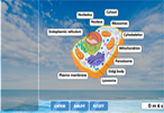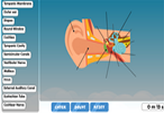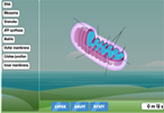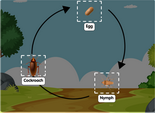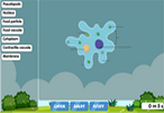Diagram of a leaf labelling game
Just like humans and animals, plants also come with their own set of organs. Among the most crucial organs a plant can have are their leaves – thin and flattened, these structures are adapted to absorb energy from our own Sun to power the processes of photosynthesis.
Leaves are primarily composed of three parts – the leaf base, the petiole or stalk, and the lamina or leaf blade. Some textbooks or online sources also refer to the leaf base and petiole synonymously as the stalk supporting the midline of the leaf.
Each leaf is attached to its stem by the stalk. The leaf blade projects from this stalk, with the center portion called the midrib. The veins, in turn, project from the midrib. These veins help transport and distribute water and other nutrients from the plant into the leaf. Likewise, they carry the main product of photosynthesis – glucose – to the stem.
Depending on the plant species, veins can be arranged in a number of ways. Dicots usually have reticulate venation, meaning the veins are arrayed randomly. Monocots have parallel venation, in which veins are lined parallel to each other.
We’ve provided this diagram of a leaf labelling game for your kids or students to develop their comprehension on basic botany and better appreciate how leaves contribute to a plant’s health.

